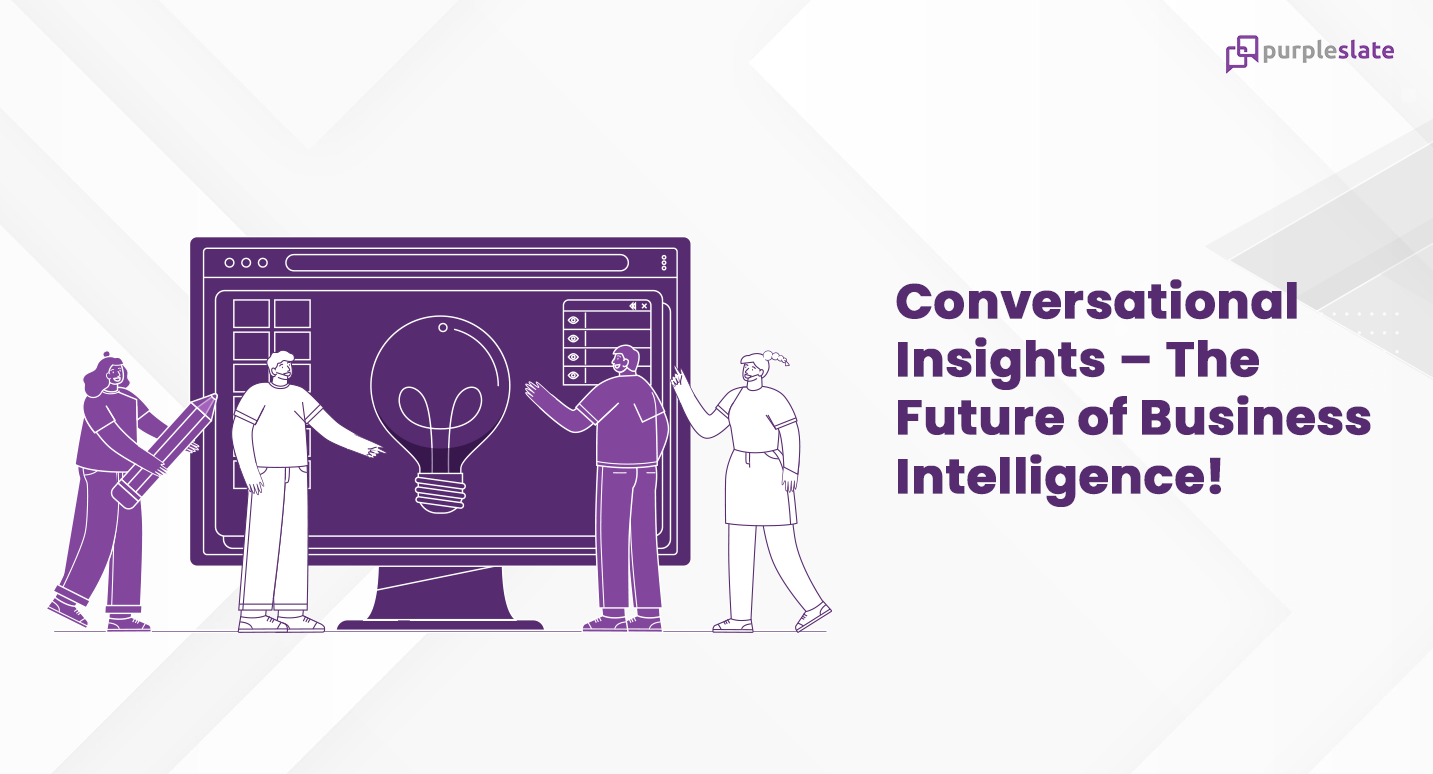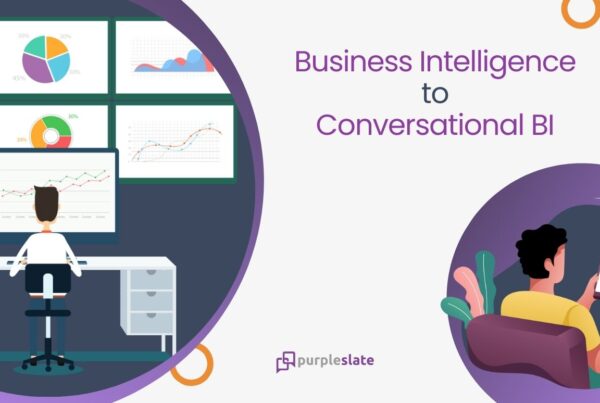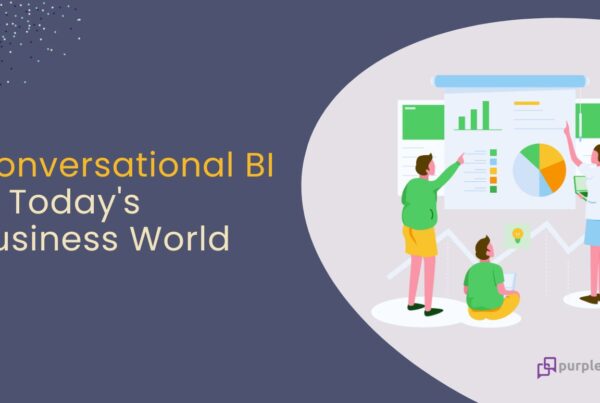
The Past Few Years of Business Intelligence
The year is 2002. The CFO of a Fortune 500 company is looking at optimizing his cash flow. Plugging the leak is mission critical, because share prices are plummeting, and shareholders are getting impatient. He’s waiting for that annual spend report to come in. It needs to get through all the red tape because the board wanted a solution yesterday.
And then he gets the news. IT team needs two more days to finish the report because some new “intern” forgot to save the spend analysis dashboard. When the CFO introspects, he understands that he had followed the process to the T.
- He submitted the request 5 business days ago as mentioned in the SOP.
- He clearly explained the requirement, its objective, business impact, guidelines to follow, and the report format.
- He even followed up a couple of times.
So what went wrong? Nothing. The issue was with the entire concept of Traditional Business Intelligence (BI). Traditional business intelligence had many shortcomings but external dependency and complexity to derive insights take the cake. Such events were common in businesses and they sparked the inception of self-service analytics.
The Current Suite of Self-Service Analytical Tools is Selfish
Fast forward to 2022. Self-service analytics have taken precedence over the legacy method of generating business intelligence reports or dashboards. Users are empowered enough to create data visualizations. However, a CFO facing a similar situation still waits for at least 4-5 business days to get that report in hand. The process has become a little bit refined but still, the dependencies exist. Complexities exist. It’s almost as if certain shortcomings in the space of business intelligence are set in stone. The future of business intelligence depends on how we address the following issues.
Difficulty in Information Access
The complexity of operating a self-service tool unfortunately has led to organizations introducing dedicated data analytics teams. This effectively cripples the purpose of self-service by creating dependencies or forcing business leaders to become tech experts.
Increase in Cost
Because a team requires people. Right from the salaries of the members, to footing their bill for additional certifications proves to be a costly affair for the organizations. Factor in the license costs of the tool, and organizations will start paying they hit pay dirt soon with the investments.
Time Loss
Most self-service analytics tools take months and years to master. Even then for a seasoned user to create dashboards and reports, it will take him or her a specific amount of time. For momentary information needs the current suite of self-service tools is not sufficient.
Real-Time Insights is Still a Distant Dream
Most of these tools create insights based on historical data. This implies for every weekly, fortnightly, or monthly meeting needs a fresh set of dashboards or reports to be produced. This will add to the already existing time delay which seriously hinders the decision-making process for business leaders.
This is by far the most lengthy problem statement that I’ve given to you - a visionary, a board member, a CXO, a farsighted business leader, and most importantly, my reader.
But I’m a big believer in setting the expectations right and most importantly, making sure you understand the context. Reading through this piece, you would have thought, “That’s me! I go through that daily.” But the solution is right here and of course, nothing is set in stone. Not even the above mentioned issues.
Conversational Insights – The Future of Business Intelligence
Interesting term? And no, this is not analyzing the conversations with the customer to understand their preferences. We are just redefining the term a little bit. Conversational Insights or Conversational BI is using natural language-driven conversations with your data to derive actionable insights. Conversational insights powered by Conversational AI, aim to remove existing complexities in information access by helping you, the data user Talk to Your Data™.
In layman’s terms, ensuring self-service analytics remain truly self-service. This is not a revolutionary ideology that sprung up out of nowhere. It has been in the discussion and works for quite some time now. Celebrated author Nir Eyal discussed this concept way back in 2016 in his blog.
If you ask the question, why conversational insights and more importantly why now, it’s fairly simple. Language is the most seamless and easy-to-use interface for human beings. Imagine involving in a dialogue with your data. You don’t have to click a thousand times and jump between multiple windows to get the information you were seeking. Rather, a simple “What were my sales for 2020 Q4?” should fetch you the relevant results. That’s the power of conversational BI.
Gartner predicts that by 2023, 25 percent of employee interactions with applications will be via voice, up from under 3 percent in 2019.
This change in data analytics can be attributed to three major factors.
Changing Technology Landscape
To explain this point a simple example would be how writing happened – Then vs Now. You write an email. Then you review it at least 3 times and correct it before sharing. The entire exercise takes you a considerable amount of time. Now? AI Tools like Grammarly does it for you and you get an error-free email in less than a minute. Technology has enabled this.
Gravitating Towards Convenience
Technological advancements enabled convenience for humans. Taking a cue from the previous example, we needed to correct our mistakes by typing them. Now, it’s the click of a button. Going forward, I’m sure the entire exercise of typing will be replaced by smart transcription, and Joaquin Phoenix’s movie Her won’t be science fiction anymore. If convenience can exist in a simple exercise like writing an email, why can’t BI tools have it?
Humans Thrive on Momentary Insights
The most important point here. The one that drives the ball home. Humans exhibit definite psychology when they seek information (also read insights). The chronological order starts with one question, then follow-up questions to gain additional insights, and then finally the action element. They do not expect a lot of insights, they just need answers to the momentary data questions they have. In simpler terms, they don’t want their BI tool to beat around the bush.
Conversational Insights Address the Root Cause
Conversational Insights is the remedy for making sure that users are easily able to access data insights that satisfy their momentary questions. The user dependency on other teams is greatly reduced thereby making sure that insights are accessed within the required time frame. Delays in decision-making and their impending effects can be mitigated by investing in conversational insights.
- Ease of use: No prior training or technical expertise is required to derive insights. You just need to know how to ask questions to your data. The system makes sure that relevant insights are shown to you in different formats including visualizations.
- Multiple input formats: You can converse with your data in multiple formats. You can chat with it using text, voice, or search based on your convenience and preferences.
- Omnichannel capabilities: Conversational Insights can make sure insights are delivered to you on the device of your choice in the channel required. Whether it’s collaboration tools like Google Chat, Microsoft Teams, Slack, or Smart Speakers like Alexa.
- Insights, anytime: You don’t have to wait around for your data analysts anymore to get that dashboard. You can open your smartphone even in the dead of night and start getting relevant information. In the truest essence, power back to people!
- Enhanced Productivity: Across teams, functions, and the organization at large. Majorly because of the timely availability of insights. Every team will overdeliver including the data analytics function as they would be able to concentrate more on their core value-adding tasks.
It’s Going to be a Conversational Insights Driven Decade
The closing notes are pretty simple. The world is increasingly going conversational. Gartner did say that by the end of 2022, 70% of the global workforce will be interacting with conversational platforms daily. The conversational BI function of an organization is also part of this transformation and conversational insights is here to define the future of business intelligence.
Interested to see conversational insights in action? View our webinar Simplified Information Access using Conversational AI




